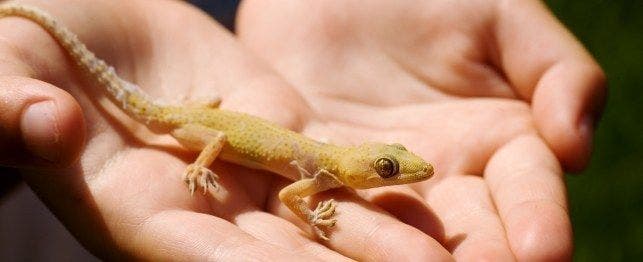
The Right Reptiles for Kids
Some kids pant for puppies. Others coo for cats. And some just can’t wait to cuddle-up with a cold blooded creature. The question is which one?
First Things First
If Nancy wants a newt, she’s got to show she can take care of one. And she shouldn’t own a reptile until she’s able to understand that her pet is a living animal, capable of experiencing pain, hunger, fright and other feelings. So, while it may be your child’s pet, you’ll need to take responsibility, teaching her about caring for her pet and teaching her how to handle him properly. You must also supervise cage cleaning and feeding.
Children are rarely content to simply observe turtles swimming in a tank or lizards basking in a cage. Sooner or later, curiosity will get the best of them, so a reptile enclosure should have a child-proof locking mechanism to keep little fingers out.
Also, a child should have a good degree of hand-eye coordination before being allowed to handle any reptile. Most children can hold a very tame, sturdy reptile properly by the age of 6 or 7. However, it’s still recommended that children do so with an adult around. A reptile that tries to bite, squirm away or whip its tail will frighten children. They may try to restrain the pet, resulting in injury to the animal or child.
Choices for Children
Here are our picks:
- Lizards. Water dragon, leopard gecko, bearded dragon
- Snakes. Corn snake, rat snake, king snake
- Turtles and tortoises. Box turtle, Asian box turtle, red-footed tortoise, leopard tortoise
A Case for Snakes
Surprisingly, a pet snake may actually make the best first pet reptile for a child. About the only negative aspect of snake ownership is that these reptiles consume other small pets, like mice. So it’s best to teach a snake to eat pre-killed prey items. Instead of purchasing a live mouse to feed to a snake, you can now buy frozen rodents that only need to be thawed before feeding. Many pet stores train their snakes to consume dead prey, which can make feeding time much easier on you.
Young corn, rat or king snakes are usually quite docile and can tolerate handling. Some are quite content to be held for hours, winding through a child’s fingers or curling up to sleep in a warm palm. Just don’t handle a snake right after it’s eaten. There could be a mess.
How About Other Reptiles?
Bearded dragons and water dragons can also be very tame and docile. But you can injure them by holding them by the tail. Geckos can also be very good pets, but they’re smaller and require a more delicate touch. Tortoises are usually gentle, but shouldn’t be handled often. Care must also be taken to ensure they’re not dropped because this can cause shell damage or internal injuries.
Sharing the Pleasure – and Pain
If you don’t think you can live with a reptile around the house, how about sending it to school? Many teachers would delight in having an iguana in the classroom – as long as you’re willing to pony up for the full-spectrum lighting, heat source, basking light, food and water dishes, cage and any other necessary equipment.
Of course, you’ll need to make provisions for reptile care on the weekends and vacations. But your little darling will still have the coolest show-and-tell item at the school.